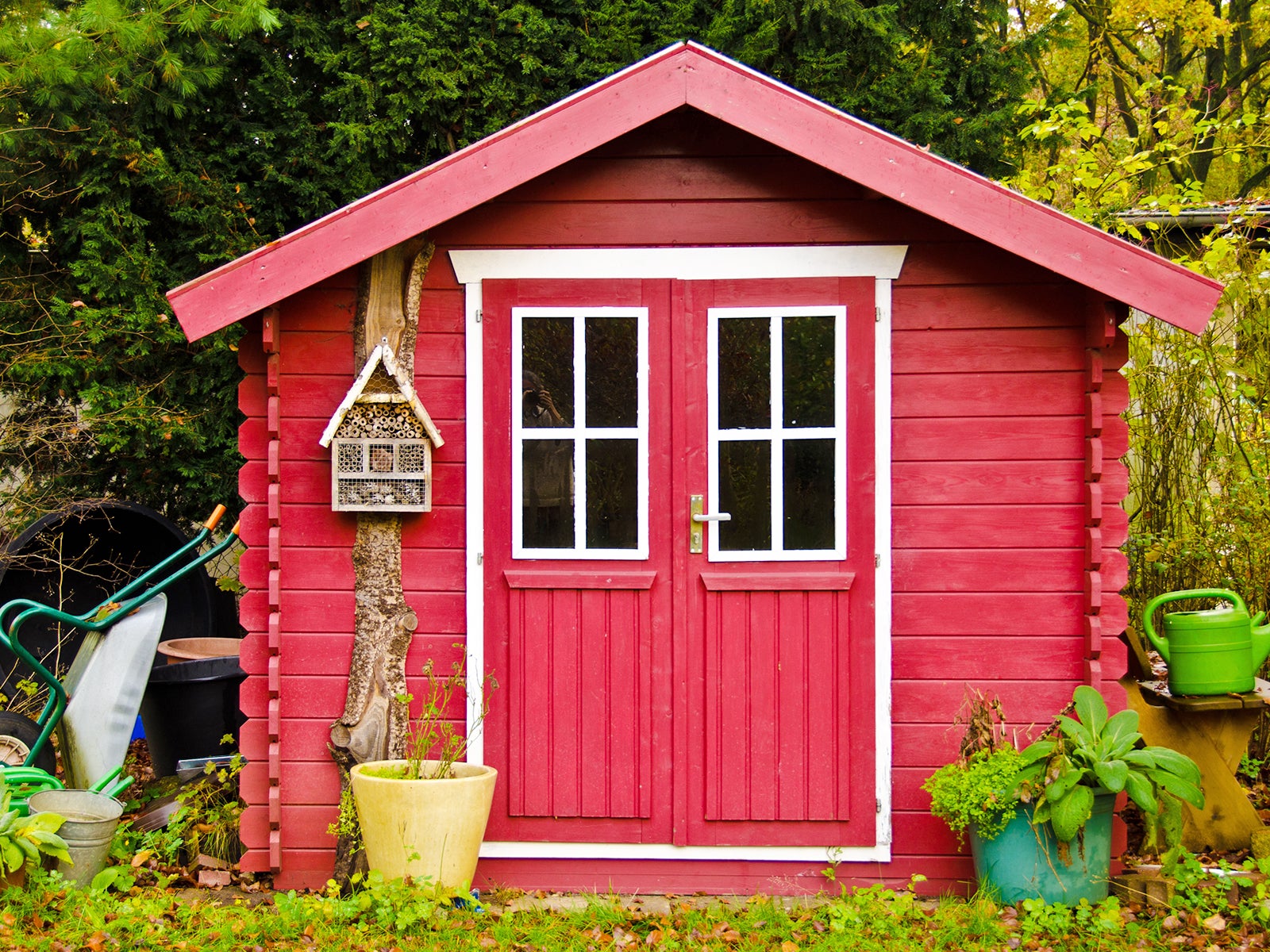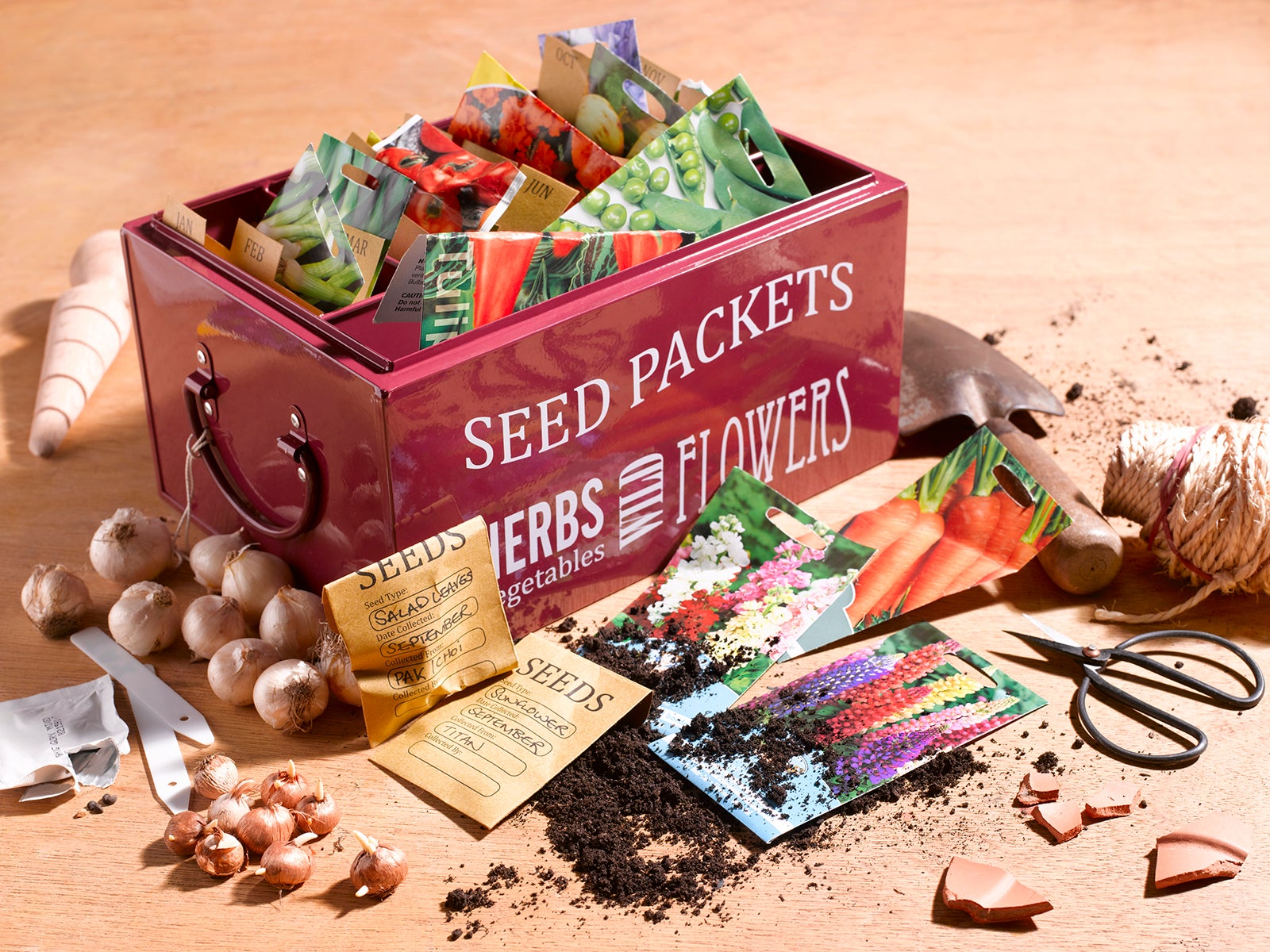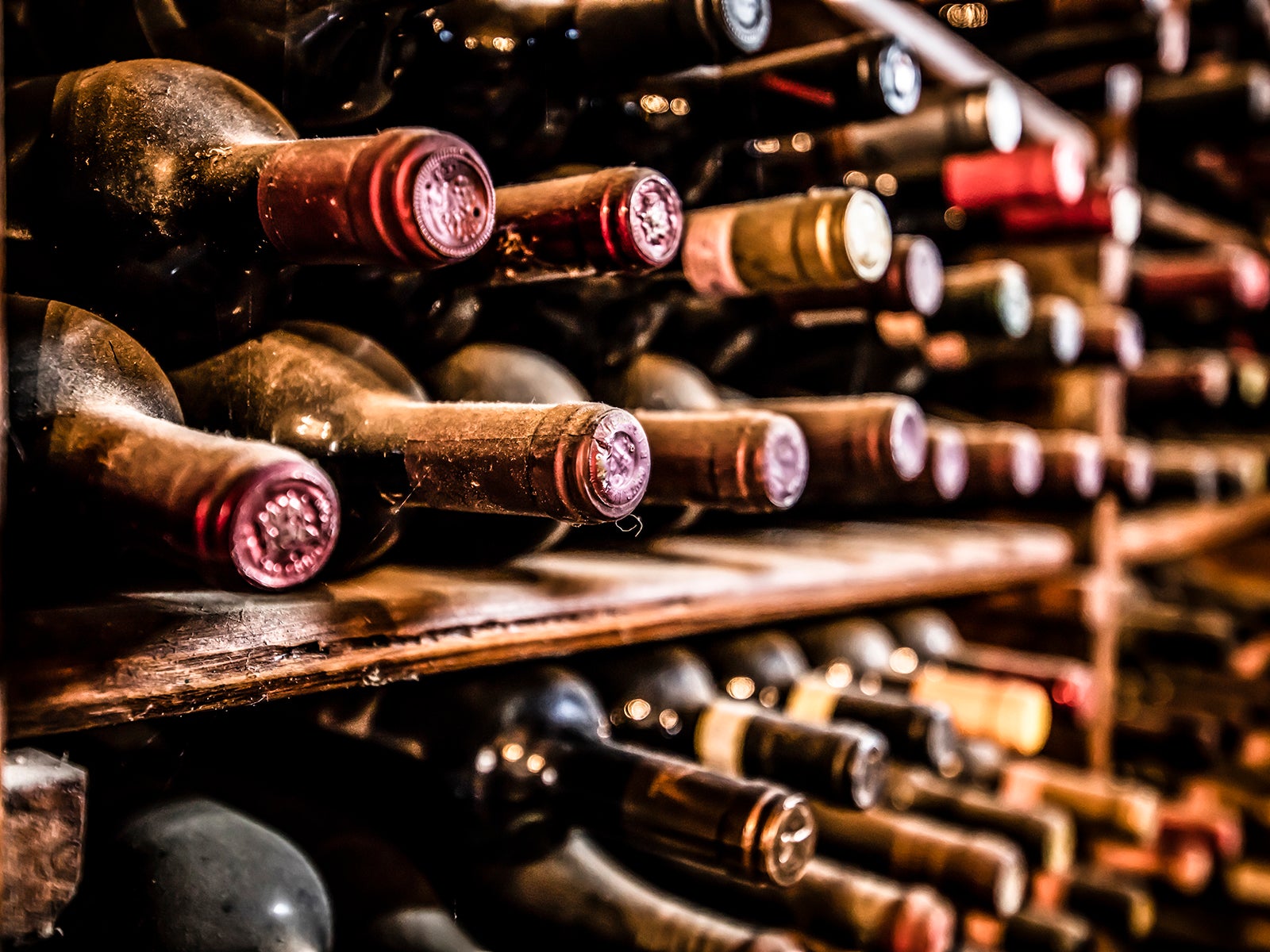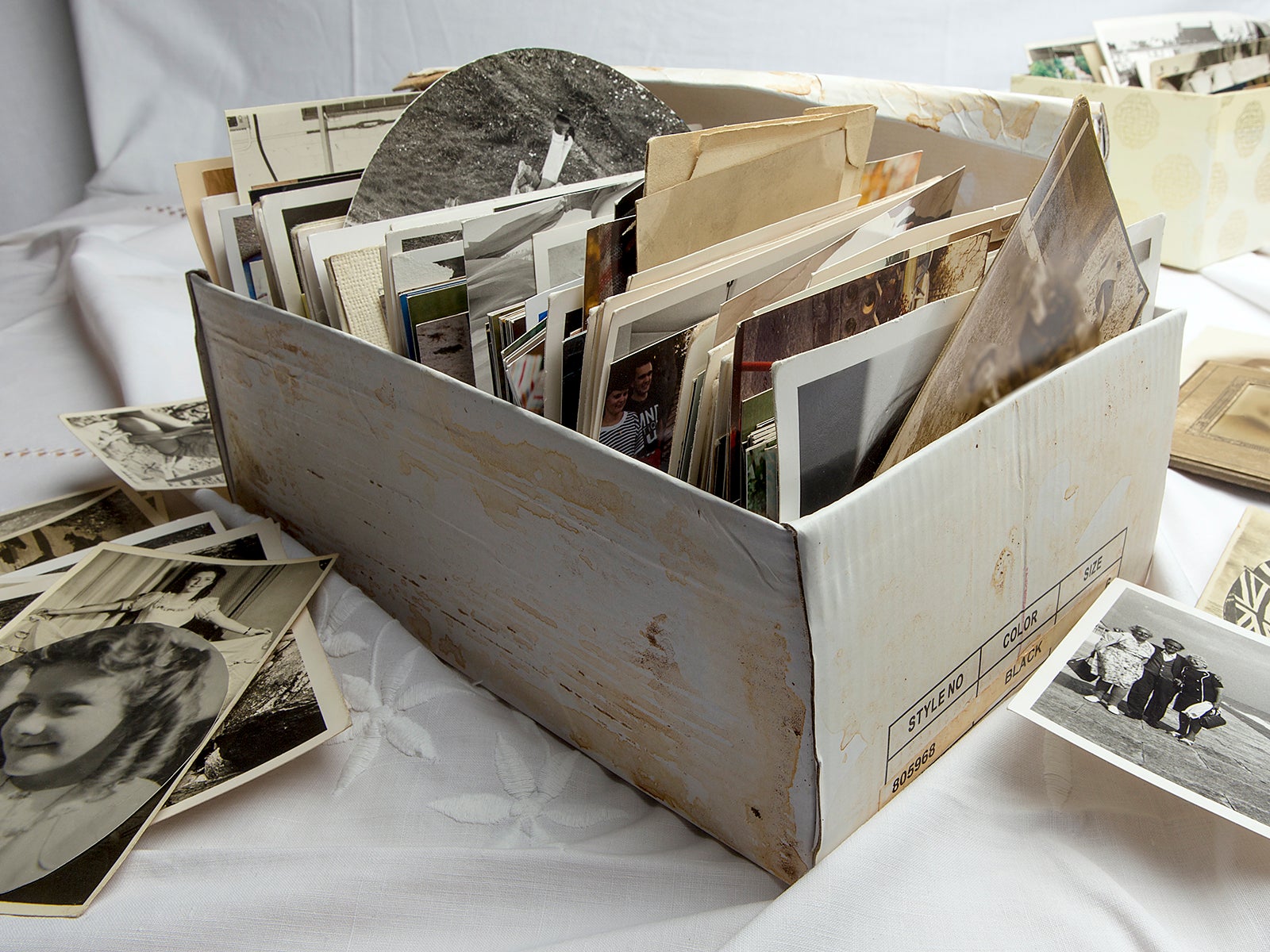15 Things You Need to Stop Storing In Your Shed – According To Experts


The humble shed should be the hub of activity in the garden. But all too often, this room outdoors becomes a dumping ground for clutter – serving as an overspill for the attic or basement.
There are also a number of items that, while logically seem to belong in the shed, are best stored in the house.
Without insulation, most sheds are not temperature controlled, and extremes of weather can damage and even destroy your belongings. In addition, the local wildlife can easily access most sheds, feeding and nesting on items that shouldn’t be there.
A regular clear out is essential to keep your shed in good order, so act now and find a new home for these common items.

1. Seeds
Seed should never be stored in the shed. 'Extreme temperatures and humidity can damage seeds' viability,' says Greg Niewold, president of Power Planter. Not only can they rot or develop fungal disease, but they are also vulnerable to vermin. 'It's best to store seeds in a cool, dry place indoors.'
Learning how to store seeds is easy. Ideally seed should be stored in a labeled paper packet within an airtight container. Add some packets of desiccant, such as silica, to remove any moisture from the container.
Seed can also be stored in the refrigerator, at around (40°F), for several years, as long as it is completely dry.
Sign up for the Gardening Know How newsletter today and receive a free copy of our e-book "How to Grow Delicious Tomatoes".
2. Bulbs
Whether storing tender summer-blooming bulbs or hardier spring bulbs, the shed is not the right place to keep them for any length of time. Bulbs make tempting food for rodents, and can also rot if they become damp.
Bulbs need a cool, dry location for storage, such as a closet or basement. But before storing them, they need to be dried out for two to three days.
Place dried bulbs in labeled paper bags or cardboard boxes – the container should be breathable to allow moisture to escape.
If storing surplus spring bulbs over winter, they can even be placed in the refrigerator for around eight weeks – to mimic the winter – then plant them as soon as the ground thaws in spring.
3. Old potting soil
'Potting soil can attract pests and mold, and it can also become stiff and compact if stored in a shed for too long,' says Greg Niewold. 'It's best to keep potting soil in a cool, dry place indoors and to use it within a few months of opening the bag.'
If you do have an old bag of potting mix hanging around, then use it up over a garden bed, and buy a new bag to pot up new plants and sow seeds.

4. Fertilizer
'Organic fertilizers are often made from materials that pests find edible. Storing them in your shed can attract unwanted visitors,' says Tom Su, a garden and landscaping expert and owner of Lawn Edging.
'Also, certain chemical fertilizers can be hazardous if they get wet or are stored in a way that leads to their breakdown or interaction with other substances.'
To avoid having to store fertilizer for long periods, don’t buy more than you need, and perhaps donate any excess to a neighbor.
5. Sharp garden tools
While in theory the shed is the ideal place to store your gardening tools, those that rely on sharp blades can go dull and rusty over prolonged periods of cold and wet.
Ideally keep smaller blades, including your best pruning shears, in the house. But if you must store sharp tools in the shed, then it’s vital to keep on top of cleaning and sharpening them.
Frequent oiling with machine oil will also help to keep them in good condition.
6. Paints and glue
Storing paint in the shed is bad news for paints and glue, as well as varnish, stains, and paint thinner. 'Paint or glue can easily break down when exposed to extreme heat, cold, or humidity,' says Bill Freimuth, vice-president of sales at Centurion Brands.
'Broken-down paints and glue work differently than intended, risking more work for future projects.'
In addition, the can may corrode – potentially causing the contents to leak out – while some substances are flammable. Ideally paint and other decorating products should be stored in a cool, dry basement.

7. Power tools
Correctly storing power tools is an important consideration. Ideally all power tools would be stored in the house or insulated garage, but it is the batteries in particular that are susceptible to damage from extremes of temperature and damp. In very cold weather they can even freeze, causing permanent damage.
According to leading power tool brand Stihl, lithium-ion batteries should be stored at half-charge in a warm, dry environment, ideally in a battery box.
'Also, power tools with electronic systems are vulnerable to corrosion or short circuiting,' says Tom Su.
Meanwhile, before the onset of winter, gas-powered tools should be either drained or stabilized – check the instruction manual.
8. Money and valuables
Never store money or valuable items such as jewelry in the shed. 'As they are typically more secluded, less fortified, and less frequently visited than your home, sheds can be prime targets for theft,' says Eugene Klimaszewski, president of Mammoth Security.
'To protect your shed, and what's inside it, consider a layered security approach. Start with solid physical defenses like robust locks and reinforced doors. Then, add a layer of technology, such as motion-activated lights to deter would-be thieves.
‘For the highest level of security, I recommend installing a shed alarm system linked to your main home security or monitored by a professional security company.’
9. Wine
Wine should never be stored in the shed as it needs a stable environment. Too much fluctuation in temperature can affect the flavor of the wine, while humidity can damage corks, potentially allowing air into the bottle.
'When humidity is higher than 70 per cent, it will likely cause mold and degradation of the labels and glue. When the humidity is below 50 per cent, corks will begin to dry out resulting in possible oxidation of the wine,' says Carrie Bell of CDA.
A cool, dry basement is the best place to store wine at home.

10. Food and pet food
While you might not think the shed is the perfect place to store your breakfast cereal, the concept of storing overstocks of canned and bagged goods, and pet food doesn’t seem quite so ridiculous. But it is a bad idea.
'It's like sending an open invitation to wildlife and pests,’ says Tom Su. 'Rodents, in particular, are attracted to food sources and can chew through containers, contaminate your supplies, and even damage other items stored in the shed.'
In the hot summer, the food in tin cans can degrade once the temperature starts to rise above 70°F. While in winter, freezing temperatures can affect the flavor of foods once they are thawed. Moist conditions can also cause cans to rust, compromising their airtight storage. Stick to the pantry.
11. Paperwork
Storing anything paper-based in the shed is never a good idea. 'For important documents, the risk of storing them in the shed is two-fold: not only theft but also potential damage from environmental factors like moisture or pests that sheds are prone to,' says Eugene Klimaszewski.
Store important paperwork in a lockable filing cabinet in the house – and anything no longer needed should be shredded.
12. Photographs and books
Treasured photographs and books are often irreplaceable, but can be irreversibly damaged by adverse weather and pests if stored in the shed.
Photographs should be stored in an album or archive box free of acid and lignin. Keep them in a closet in the main house, rather than an uninhabitable basement or attic.
Books are ideally stored in waterproof plastic containers. Wrap delicate tomes in paper towel or bubble wrap, and pack in the box. Add a few packets of silica gel to keep out moisture, and store the box in an attic or closet.

13. Propane tanks
'Storing propane tanks in a shed is risky primarily due to their explosive potential,' says Tom Su.
'A leak, even a small one, in a confined space like a shed can lead to a build-up of gas, which could be ignited by something as simple as starting a lawnmower. It's a safety hazard that's easily avoided by storing tanks outside, in a well-ventilated area.'
14 . Wooden furniture
Unless it’s designed for outdoor use, wooden furniture should always be stored in the house. When affected by heat and humidity, the furniture may warp. These conditions can also destroy a painted or varnished finish.
Wood can also discolor over time – for example, oak is prone to turning black in damp conditions.
Leather and fabric upholstered furniture should also never be stored in the garden shed.
15. Batteries
As well as those from power tools, you should avoid storing household batteries in the shed – or items that are powered by them. 'Extreme temperatures can shorten the life of batteries and cause them to swell,' says Bill Freimuth. Humidity can also cause corrosion.
'Save your batteries and your wallet by storing them in a dry place with stable temperatures.'

Melanie is an experienced gardener and has worked in homes and gardens media for over 20 years. She previously served as Editor on Period Living magazine, and worked for Homes & Gardens, Gardening Etc, Real Homes, and Homebuilding & Renovating. Melanie has spent the last few years transforming her own garden, which is constantly evolving as a work in progress. She is also a passionate organic home grower, having experimented with almost every type of vegetable at some point. In her home, Melanie tends to an extensive houseplant collection and is particularly fond of orchids.